|
Advice article filter
|
10 tips to make a thin horse fatterIs your horse too thin? A horse with a hollow appearance behind the ribs, at the flanks, is an indication of a roughage deficiency. If you can see your horse’s ribs and the hindquarters have a hollow appearance (the hip bone protrusions are clearly visible), then your horse is indeed too thin. It’s also possible that your horse isn’t actually too thin, but that it needs slightly more muscle definition. The causes of a thin horseThere could be a variety of reasons for an underweight horse:
How to get a thin horse fatter againIt’s important to first look for the cause when you realise your horse is too thin. Perhaps he’s not taking in sufficient energy, which will purely be a matter of feeding him more fibre, fat and protein. But he could also have something wrong with him which is making him thin. We will give you 10 tips which will help you get your thin horse back to an ideal weight. 1. Arrange for blood tests and a coprological examinationYou can arrange for a blood test to be done if it isn’t simply a case of your horse not taking in sufficient food. A blood test will look at any possible medical reasons for the horse being underweight. For example, the blood test will check whether the liver, kidneys and intestines are all functioning correctly. Or whether inflammatory processes or a virus may be to blame. The coprological examination looks at any possible worms and sand in the faeces. Both examinations can be carried out by a vet. 2. Check the teethA horse suffering from dental problems may well suddenly start to eat less and therefore lose weight. So always make sure you have the teeth checked by the dentist too. If the teeth, blood and coprological examinations all come back clear, you can start a special diet plan to stimulate an increase in weight. Your vet should be able to effectively help you with this and you can also ask Pavo’s nutritional experts for advice. 3. Make sure you have good quality roughageHorses can’t grow and develop from poor quality hay and straw. A horse which needs to gain weight should be given nutritious hay or haylage and avoid coarse or hard-to-digest roughage. The quality and nutritional value of roughage can differ per batch. You will need to get your hay tested if you want to be absolutely certain of its quality.
4. Give unlimited roughageGive a thin horse unlimited amounts of roughage. Horses will naturally look for food all day. An unlimited amount of roughage will therefore ensure your horse can eat throughout the entire day and will therefore put on weight quicker. Pavo FibreNuggets can offer a solution if there isn’t enough roughage. These grass chunks are rich in fibre and have a consistent quality. Suitable for every horse and diet and also easily digestible for older horses. 5. Give your horse (more) outdoor grazing timeHorses will usually get to their ideal weight quickest through outdoor grazing. Fresh grass contains more energy and protein than hay and silage. So make sure your horse can eat plenty of grass, providing this is possible. Many horses spend less time in the meadow during the winter months compared to the summer. The grass doesn’t grow in the winter and the levels are lower. That’s why you will often see horses lose a little weight during the autumn and winter months. Do keep the fructan content in the grass into account during the outdoor grazing season, especially if your horse is sensitive to sugars. 6. Opt for expanded pellets and/or puffed muesliTry to give a horse or pony which needs to put weight on an energy-rich and easily digestible diet. Therefore opt for concentrates where the grains have been opened up through heating (pelletised in chunks and puffed in mueslis), such as Pavo EnergyControl and Pavo SportsFit. The raw materials are heated under pressure, making the starch almost completely digestible in the small intestine. Significantly less lactic acid is subsequently produced in the appendix and large intestine. As a result, the acidity doesn't decrease and there are no toxins due to the dying off of microorganisms. 7. Feed a diet which is rich in oils or fatOil is a source of sustainable energy. Your horse’s energy levels will increase, but won’t overheat. Add vegetable oil to the diet, or opt for a concentrate with a somewhat higher fat or oil content. Feed your sport horse, for example, Pavo SportsFit (muesli), Pavo EnergyControl (chunks) or Pavo TopSport. Pavo 18Plus is specifically tailored to the needs of older horses. Or how about a slobber like Pavo SlobberMash as an extra treat! 8. Adjust the diet in line with the amount of workAlways adjust the diet in line with the work your horse needs to carry out. If you do quite a bit of training and you’ve noticed your horse is getting a little too lean, this may indicate your horse isn’t taking in enough energy and protein in relation to the amount of work he is carrying out. In such cases it’s recommended to switch over to an energy-rich chunk or muesli, or an extra topping, such as Pavo TopSport. 9. Give your horse sufficient proteinFeed specifically made for pregnant and lactating mares and young horses will always have a higher protein content, as these horses need to grow. A mare chunk, like Pavo PodoLac, is therefore certainly worth considering for a thin horse, as you’ll also be supporting the muscle development. An older horse will have a less efficient digestive system and will be able to digest protein less effectively than a younger horse. An older horse will therefore need relatively more protein in the diet in order to maintain both its weight and its muscle mass. Pavo 18Plus is perfect for this purpose: a food specifically produced for older horses, with an increased protein content. 10. Support the horse's intestinal health with de-sugared beet pulpBeet pulp is an excellent supplement for thin horses. One example of de-sugared beet pulp is Pavo SpeediBeet. This product contains pectin, a soluble fibre which is even more easily digestible than the fibres in other roughage. This means this beet pulp is a fantastic source of very slow releasing energy and perfectly suitable for all types of horses and ponies. Pectin has a prebiotic effect. This means the fibres support the growth of healthy bacteria in the intestines. However, if your horse is very thin, or if it perhaps has difficulty absorbing ‘normal’ roughage, Pavo FibreBeet may be a better choice. This is a mixture of Pavo SpeediBeet, enriched with alfalfa for extra protein. This combination has made it a safe and healthy ‘fattening food’ and ideal for thin (old) horses and (sport) horses with poor muscular development. It’s ultimately suitable for (older) horses with dental problems, as both products need to be soaked in water before feeding. You can read more about beet pulp for horses here. Making a horse fatter: things you should definitely not doYou’ll undoubtedly also hear a number of ‘tips’ in relation to getting your horse to put on weight which you should definitely NOT do. Never give your horse large quantities of crushed corn, silage or cornmeal in an attempt to make it put on weight. Corn may well result in a horse quickly putting on weight, but corn is very difficult to digest for horses. The horse can end up with gas colic or diarrhoea when undigested corn enters the large intestine and appendix. So be careful with this! 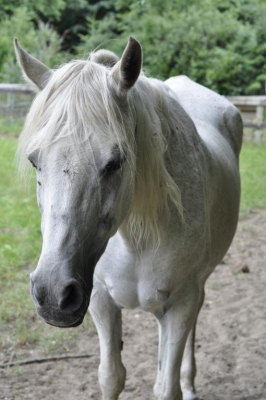
Pavo 18PlusKeeping your senior horse fit and healthy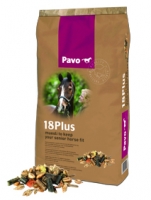 Pavo EnergyControlTop sport feed for sustained performance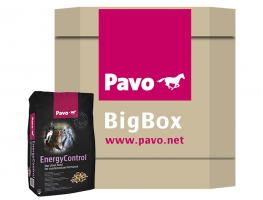 Pavo FibreBeetThe best possible support for recovery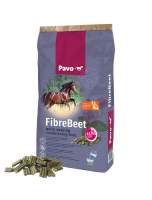 Pavo FibreNuggetsThe best alternative for roughage, suitable for all horses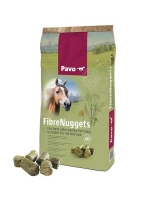 Pavo Podo®LacFor heavily pregnant and lactating mares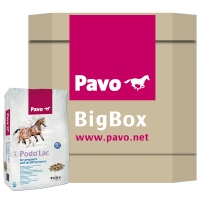 Pavo SlobberMashA wonderful warm treat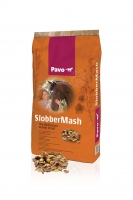 Pavo SpeediBeetHigh-fibre, quick soaking beet pulp flakes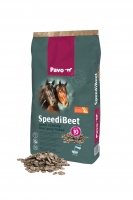 Pavo SportsFitThe sport muesli for all disciplines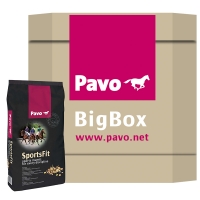 Pavo TopSportThe muesli topping for sport horses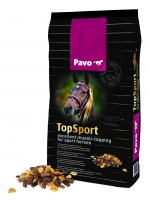 |

